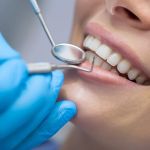How to Perform an Oral Mech Exam for Children: A Complete Guide
Performing an oral mechanism (oral mech) exam on children is an essential skill for pediatric healthcare professionals. It is a comprehensive assessment that evaluates the structure and function of the mouth, tongue, lips, teeth, and other oral structures. This exam helps identify any abnormalities or issues related to speech, swallowing, and general oral health. Here’s a detailed guide on how to perform an oral mech exam for children, with step-by-step instructions, tips, and helpful insights.
What Is an Oral Mechanism Exam?
An oral mechanism exam is a clinical assessment used to examine the structure and functionality of the oral and facial muscles. It is often conducted by pediatricians, speech-language pathologists, or other medical professionals to diagnose conditions that affect speech or swallowing. During the exam, the examiner checks for normal and abnormal movements, muscle tone, strength, and coordination of the oral muscles, which play a crucial role in speech production, eating, and swallowing.
Why Perform an Oral Mech Exam in Children?
The primary purpose of an oral mech exam is to assess the child's ability to use their mouth and facial muscles correctly. This is important because many developmental disorders, such as speech delays, feeding difficulties, or swallowing problems, may stem from issues with oral motor function. An oral mech exam helps identify these issues early on, allowing for timely intervention and treatment.
Step-by-Step Guide: How to Perform an Oral Mech Exam for Children
Performing an oral mech exam requires a systematic approach, focusing on various aspects of the child’s oral and facial structures. Here's a step-by-step guide on how to conduct the exam:
1. Preparation
Before starting the oral mech exam, ensure the child is comfortable and relaxed. Establish rapport by explaining the process in simple terms that the child can understand. For younger children, use toys or fun activities to engage them during the examination to make the process less intimidating. A positive, calm environment will help the child remain cooperative.
2. Examine the Face and Jaw
Begin the exam by observing the child’s face and jaw for any asymmetries or abnormalities. Look for signs of tension or drooping in the facial muscles, which could indicate a neurological condition. Gently palpate the jaw muscles to check for any tenderness, tightness, or irregularities that might suggest an issue with muscle function.
3. Check Lip and Tongue Movements
Next, observe the child’s lip and tongue movements. Ask the child to perform simple tasks like smiling, puckering their lips, or sticking out their tongue. These movements test the strength and coordination of the lips and tongue. Look for difficulty or weakness in these movements, which may indicate a problem with the oral motor system.
4. Evaluate the Teeth and Gums
Examine the child’s teeth and gums for any signs of decay, abnormal alignment, or other dental issues. Gently check the alignment of the bite by having the child close their mouth and bite down. Ensure the upper and lower teeth meet properly. If the child wears braces or has other dental appliances, note their condition and how they affect oral function.
5. Check Palate and Soft Tissue
Use a flashlight to examine the inside of the child’s mouth. Look at the roof of the mouth (palate), the back of the throat, and the soft tissues for any abnormalities. Check for a high or narrow palate, cleft palates, or other conditions that could affect speech or swallowing.
6. Test Swallowing and Speech
To evaluate swallowing, observe the child as they drink water or eat a small bite of food. Look for signs of difficulty or discomfort, such as coughing, choking, or trouble chewing. Swallowing issues could be a sign of underlying motor dysfunction or a neurological condition. You can also ask the child to say specific sounds or words to assess their speech clarity and strength.
Common Signs of Oral Motor Dysfunction in Children
During the exam, there are several key signs of oral motor dysfunction to look out for:
- Poor tongue or lip control: Difficulty with tasks such as sucking, swallowing, or speaking clearly.
- Asymmetry of the face or mouth: Uneven facial muscles may indicate nerve damage or other medical issues.
- Weak jaw or facial muscles: Signs of muscle weakness, such as drooling or difficulty eating, may suggest motor dysfunction.
- Speech or swallowing problems: Difficulty articulating words or issues with swallowing food and liquids.
When to Seek Help After an Oral Mech Exam
If any of the signs mentioned above are present, it may be necessary to seek further evaluation and intervention from a pediatrician, speech-language pathologist, or other specialists. Early detection and treatment of oral motor dysfunction can help prevent long-term issues related to speech, feeding, and overall development.
Important Tips for Conducting an Oral Mech Exam with Children
- Be patient: Children may not fully understand the purpose of the exam, so it's important to remain calm and patient throughout the process.
- Engage the child: Make the exam more engaging by using toys, games, or playful language to keep the child relaxed.
- Use appropriate tools: A flashlight and tongue depressor can help with the examination of the mouth, palate, and throat.
- Observe and document: Carefully observe all areas of the oral cavity and document your findings for future reference.
Performing an oral mech exam for children is a vital part of assessing oral health and motor function. By following the right procedure and being mindful of the child’s comfort, healthcare providers can ensure an effective assessment that can lead to early identification and treatment of potential oral motor issues.






 Lakeland Creek Family Dental4.0 (418 review)
Lakeland Creek Family Dental4.0 (418 review) Kalil & Kress Family and Cosmetic Dentistry4.0 (503 review)
Kalil & Kress Family and Cosmetic Dentistry4.0 (503 review) Sierra Family Dentistry4.0 (17 review)
Sierra Family Dentistry4.0 (17 review) Dr. David S. McGee, DMD5.0 (10 review)
Dr. David S. McGee, DMD5.0 (10 review) Hudec Dental4.0 (455 review)
Hudec Dental4.0 (455 review) Dr. Surya Bhavaraju0.0 (0 review)
Dr. Surya Bhavaraju0.0 (0 review) The Importance of Oral Health Education During Pregnancy for a Healthy Pregnancy
The Importance of Oral Health Education During Pregnancy for a Healthy Pregnancy Best Tips for Brushing Your Teeth Properly for Healthy Gums: Essential Techniques for Oral Health
Best Tips for Brushing Your Teeth Properly for Healthy Gums: Essential Techniques for Oral Health Why Skipping Dental Checkups Can Lead to Bigger Oral Health Problems
Why Skipping Dental Checkups Can Lead to Bigger Oral Health Problems Advantages of Porcelain Dental Restorations
Advantages of Porcelain Dental Restorations How Can Diabetes Cause Tooth and Gum Problems? Preventing and Managing Oral Health Issues
How Can Diabetes Cause Tooth and Gum Problems? Preventing and Managing Oral Health Issues Healthy Habits for Promoting Good Oral Health and Hygiene: Tips for a Healthy Smile
Healthy Habits for Promoting Good Oral Health and Hygiene: Tips for a Healthy Smile